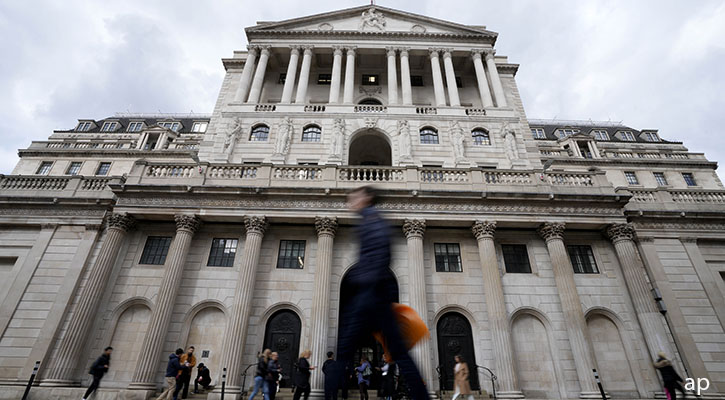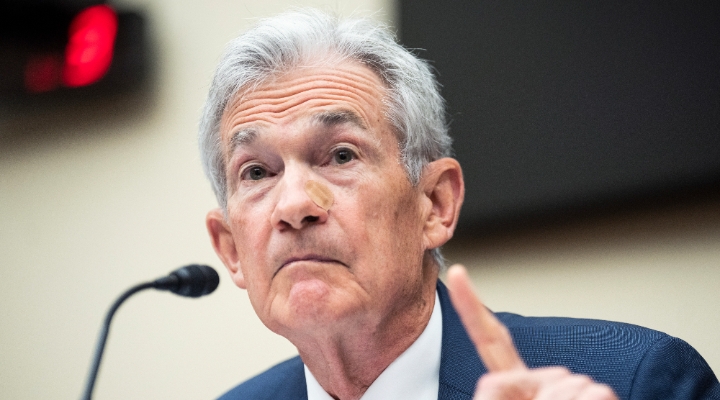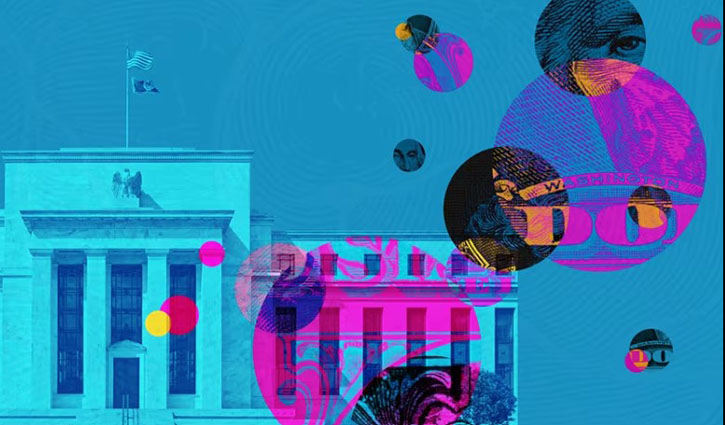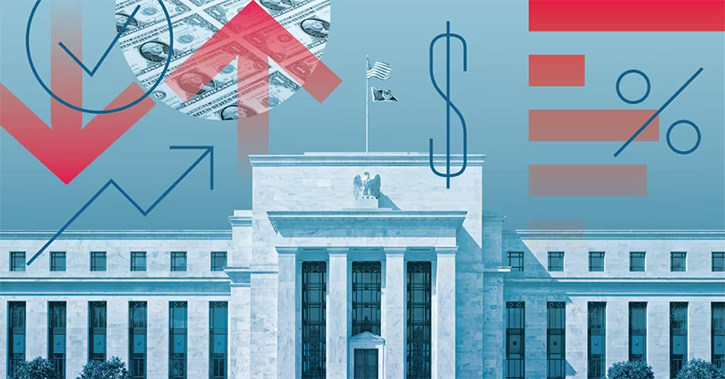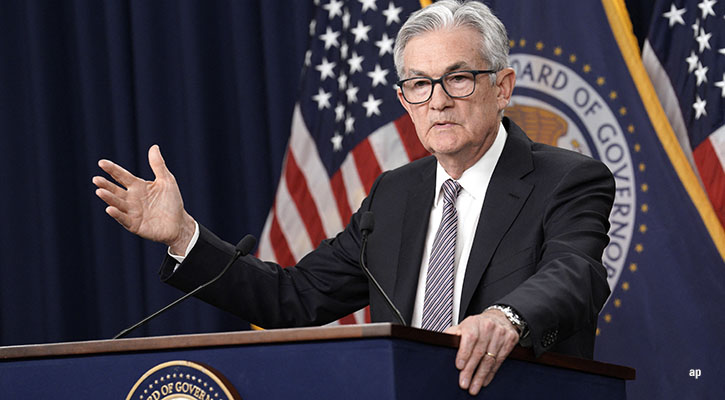
The Federal Reserve may be widely expected to leave interest rates steady at its meeting this week, but there are still plenty of unknowns about where this policy will head in the months to come.
Chief among the uncertainties is how the Fed will factor the continued unexpected strength of the economy (especially consumer spending and the job market) into its outlook. Complicating matters is the big rise in bond yields that has accompanied the Fed signaling a pause in its rate hikes.
What Higher Bond Yields Could Mean
The recent increase in bond yields – which filters leads to higher mortgage rates – could potentially act as a brake on the economy. But just how much of an impact this tightening of financial conditions will have is up for serious debate, as is whether it’s truly a substitute for more rate hikes. Investors may want to get their financial dictionaries out and prepare for Fed chair Jerome Powell to be hit with questions about “term premiums” in the bond market.
One thing that most in the market seem to agree on is that the Fed won’t be raising interest rates this time around. According to the CME FedWatch Tool, bond futures traders peg the odds of the Fed keeping its key federal-funds rate target unchanged as a near certainty, over 98%. The current target range is 5.25%-5.50%.
The Outlook for the Fed’s Interest Rate Plans
However, the Fed is seen as keeping the door open to additional interest rate increases in coming months in case there’s evidence that recent improvements in inflation are stalling out or even reversing against the backdrop of a strong economy. On this note, economists expect Powell to stress being “data dependent” during his post-meeting press conference.
Donald Rissmiller, chief economist at Strategas Research Partners, counts himself among the consensus that expects the Fed to hold rates steady. “I don’t think that getting slightly more restrictive in this environment is urgent, but I would expect the Fed to leave its options open,” he says.
Should the Fed hold rates steady, this would mark the first time the central bank has left the policy unchanged at two consecutive meetings since it began raising rates in March 2022. The Fed last raised rates in July, when it upped its funds rate target by a quarter of a point.
Rissmiller characterises recent economic data as “choppy” and happening “in the context of some pretty significant geopolitical uncertainty. If you’re dealing with mixed data, and there are other concerns, why not collect more data and evaluate the situation?”
Of particular focus will be the Fed’s view of financial conditions. This technical term covers a spectrum of markets — such as stocks, different kinds of bonds, and currencies — where swings in prices and rates can potentially affect the economy beyond the Fed’s official moves.
In particular, attention has been paid to the steep rise in government bond yields since the end of July. Since that time, the yield on the key U.S. Treasury 10-year note has risen from 3.97% on July 31 to a recent high of just under 5%. As of Tuesday, the 10-year note yielded 4.87%.
Powell’s Take on Rising Bond Yields
Fed officials, including Powell, have suggested that the rise in bond yields has led to a tightening of financial conditions, which should slow the economy and thus potentially supplant the need for another increase in the funds rate. ”Financial conditions have tightened significantly in recent months, and longer-term bond yields have been an important driving factor in this tightening,” Powell said in mid-October.
However, there are differing opinions about these conditions. At Goldman Sachs, which produces the widely followed Financial Conditions Index, economist Joseph Briggs recently said that although conditions have significantly tightened over the last two years, on a historical basis they’ve been “exceptionally tight or exceptionally loose.”
At Bank of America, head of rates strategy Mark Cabana is skeptical of the notion that financial conditions have tightened enough to preclude the need for another interest rate increase. He notes that in the credit markets, yields are near historically low levels compared with government bonds—the opposite of what the case would be in tight conditions. In addition, he says, stocks may be off their highs, but they’re still 10% higher than where they started the year.
Cabana believes what’s more significant is the Fed’s belief that the rise in long-term bond yields represents tightening financial conditions and is not simply a reflection of investors expecting stronger economic growth as the cycle of rate hikes ends.
Why Bond Term Premium Matters to Fed Rate Plans
This relates to the wonkier but still-important concept of term premium, which is basically the additional compensation investors demand for buying a long-term bond rather than investing in a series of shorter-term bonds. As a result, term premiums come with expectations for short-term interest rates during the entire life of the bond. Given how difficult it is to know what the Fed may be doing over the next six months, never mind the next 10 years, that’s a challenging calculus. Even Fed economists say that term premiums are “not directly observable.”
Cabana says, “You don’t know how much of that is expected Fed policy, future growth, and future inflation.”
Still, Fed officials, including Powell, have argued that the rise in bond yields is at least partly due to this hard-to-measure factor, and not changing expectations about economic growth or inflation as a result of the Fed signaling it won’t be as aggressive in raising rates.
But Cabana says Bank of America disagrees. “If the Fed is moving a little more cautiously, then that lowers the chance of a recession, and so we’ll therefore revise up growth, inflation, and the [longer-term] Fed policy rate.”
In addition, Cabana questions whether Fed policy is as restrictive as officials have been suggesting, given the continued strong pace of economic growth. “Incoming economic data argues for a different signal than what Fed officials have been saying,” he says.
When Will the Fed Cut Rates?
In the bond futures market, traders are still betting that the Fed is done raising rates and instead will begin cutting rates in the middle of 2024. Based on the highest expectations for next year, the Fed is seen lowering rates to a target range of 4.50%-4.75% by December, according to the CME FedWatch Tool.
Cabana says the Bank of America team continues to call for the Fed to raise rates again in either December or January.
Rissmiller thinks the central bank is done raising rates. However, he believes Powell will continue to emphasize the need to keep rates elevated until there are clear signs the economy is weakening, especially in the job market. “We have made some progress on inflation, that’s the good news,” he says. “It’s just that the job doesn’t look like it’s done yet, so the Fed has to be data-dependent. And the labor market data is the piece of the puzzle that is still missing. There’s evidence that the labor market is overheated.”
As a result, Rissmiller expects the Fed to keep rates around current levels “well into next year,” until jobs data swings from positive to negative. “Restrictive policy generates below-trend growth just to open some slack [in the economy] so you don’t have the same inflationary pressures, and that box hasn’t really been checked yet,” he explains.








